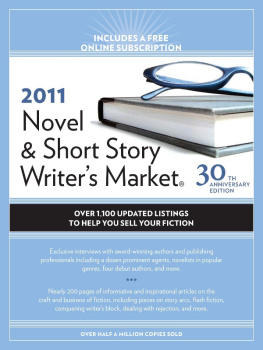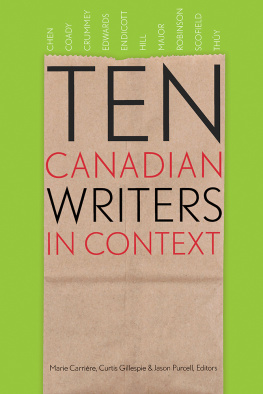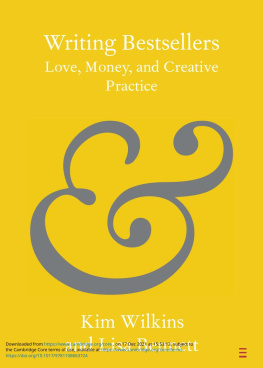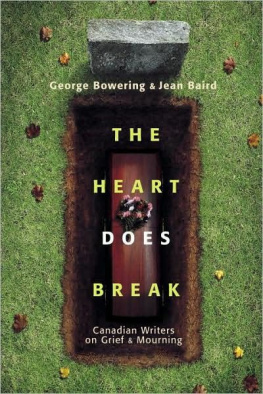Producing Canadian Literature
TransCanada Series
The study of Canadian literature can no longer take place in isolation from larger external forces. Pressures of multiculturalism put emphasis upon discourses of citizenship and security, while market-driven factors increasingly shape the publication, dissemination, and reception of Canadian writing. The persistent questioning of the Humanities has invited a rethinking of the disciplinary and curricular structures within which the literature is taught, while the development of area and diaspora studies has raised important questions about the tradition. The goal of the TransCanada series is to publish forward-thinking critical interventions that investigate these paradigm shifts in interdisciplinary ways.
Series editor:
Smaro Kamboureli, Canada Research Chair in Critical Studies in Canadian Literature, School of English and Theatre Studies and Director, TransCanada Institute, University of Guelph
For more information, please contact:
Smaro Kamboureli
Professor, Canada Research Chair in Critical Studies in Canadian Literature
School of English and Theatre Studies
Director, TransCanada Institute
University of Guelph
50 Stone Road East
Guelph, ON N1G 2W1
Canada
Phone: 519-824-4120 ext. 53251
Email: smaro@uoguelph.ca
Lisa Quinn
Acquisitions Editor
Wilfrid Laurier University Press
75 University Avenue West
Waterloo, ON N2L 3C5
Canada
Phone: 519-884-0710 ext. 2843
Fax: 519-725-1399
Email: quinn@press.wlu.ca
Producing Canadian Literature
Authors Speak on the Literary Marketplace
Kit Dobson and Smaro Kamboureli

Wilfrid Laurier University Press acknowledges the support of the Canada Council for the Arts for our publishing program. We acknowledge the financial support of the Government of Canada through the Canada Book Fund for our publishing activities.

Library and Archives Canada Cataloguing in Publication
Dobson, Kit, 1979
Producing Canadian literature : authors speak on the literary marketplace / Kit Dobson
and Smaro Kamboureli.
(TransCanada series)
Includes bibliographical references.
Issued also in electronic format.
ISBN 978-1-55458-355-3
1. Economics and literature. 2. Authors and publishersCanada. 3. Canadian
literaturePublishing. 4. Booksellers and booksellingCanada. 5. Government aid to
literatureCanada. 6. Authorship. 7. Authors, CanadianInterviews. I. Kamboureli, Smaro
II. Title. III. Series: TransCanada series
PN151.D63 2013 070.52 C2012-907186-2
Electronic monograph in multiple formats.
Issued also in print format.
ISBN 978-1-55458-639-4 (PDF).ISBN 978-1-55458-640-0 (EPUB)
1. Economics and literature. 2. Authors and publishersCanada. 3. Canadian
literaturePublishing. 4. Booksellers and booksellingCanada. 5. Government aid to
literatureCanada. 6. Authorship. 7. Authors, CanadianInterviews. I. Kamboureli, Smaro
II. Title. III. Series: TransCanada series (Online)
PN151.D63 2013 070.52 C2012-907187-0
Cover design and text design by Blakeley Words+Pictures. Front cover image courtesy of LEM ( www.lemproducts.com ).
2013 Wilfrid Laurier University Press
Waterloo, Ontario, Canada
www.wlupress.wlu.ca
This book is printed on FSC recycled paper and is certified Ecologo. It is made from 100% post-consumer fibre, processed chlorine free, and manufactured using biogas energy.
Printed in Canada
Every reasonable effort has been made to acquire permission for copyright material used in this text, and to acknowledge all such indebtedness accurately. Any errors and omissions called to the publishers attention will be corrected in future printings.
No part of this publication may be reproduced, stored in a retrieval system, or transmitted, in any form or by any means, without the prior written consent of the publisher or a licence from the Canadian Copyright Licensing Agency (Access Copyright). For an Access Copyright licence, visit http://www.accesscopyright.ca or call toll free to 1-800-893-5777.
Contents
Jeff Derksen
Kit Dobson
Kit Dobson
Smaro Kamboureli and Kit Dobson
Smaro Kamboureli and Kit Dobson
Smaro Kamboureli and Kit Dobson
Smaro Kamboureli and Kit Dobson
Smaro Kamboureli and Kit Dobson
Kit Dobson
Kit Dobson
Smaro Kamboureli and Kit Dobson
Smaro Kamboureli and Kit Dobson
Foreword
Producing a Globalized Canadian Literature
and Its Communities
Jeff Derksen
The small modernist library in New Westminster, B.C., opened in the year that I was born. Its architecture, a modest variation on the International Style, and its open floorplan with a mezzanine, reflected the way in which culture was being brought into the Canadian public sphere, and signalled the centrality of print culture within the shaping of a national imagination. Around the centenary of 1967, all of the books produced by Canadian authors, which had previously sat discreetly on the shelves, suddenly grew a red maple leaf on their spine: as their number increased, the library became autumnal with CanLit. I worked my way, from left to right, across the shelves of the library, reading whatever red-leafed book lay in my route, an education drawn from the combination of architectural space and the librarys cataloguing system. Sometimes Id be pulled in by a particular author, and my brother and I would take out all of their books and swap them back and forth, coordinating our reading tempo. Sometimes the very strangeness of the language and of the world a book depicted kept me hooked. I still recall the cool prose and the fascinating alienating effect of John Metcalfes prose, and Alice Munros short storiesso tied down and domestic in comparison to our working-class lives! Even the rock-hard lives of George Rygas northern Alberta farmers and desk clerks felt more recognizable, even on the rainy coast. Occasionally, I would stumble on a book that made the local unfamiliar as well, such as George Bowerings Flycatcher & Other Storiesthis other world of Bowerings Vancouver was a mere hour away.
Rather than being nostalgic, I now look back at that moment, concretized so nicely in the architecture, not as a period when the contradictions of the state were hidden within a welcoming cultural nationalism, but as a moment when ones relationship to Canadian literature was mediated more by public institutions than by the forces we now rather casually generalize as the market. Decades of strong literary criticism and cultural studies have done a good job of overturning the exclusions and distortions of Canadian life and history that the ordered modernist shelves of my public library contained. Were there any First Nations authors who crossed my reading route? I certainly read about them, but was there anything by them? Did I get a sense of the nearness of Hogans Alley, the black communitys neighbourhood, even as it was being razed? Our collective criticism worked hard to make what was hidden visible, and to challenge the categories that produced such invisibility. So, while we can easily see the shifts in the way we consume literature todayonline sales and near-monopoly bookstores are the most obviouswhat is perhaps more difficult to perceive is the new set of mediations and possibilities within which Canadian authors produce their work. The subtle or even glaring structures that Canadian authors must negotiate in the conception and production of their work are very different than they were at the apex of the cultural nationalism project, and even very different than they were five years ago.
Next page






